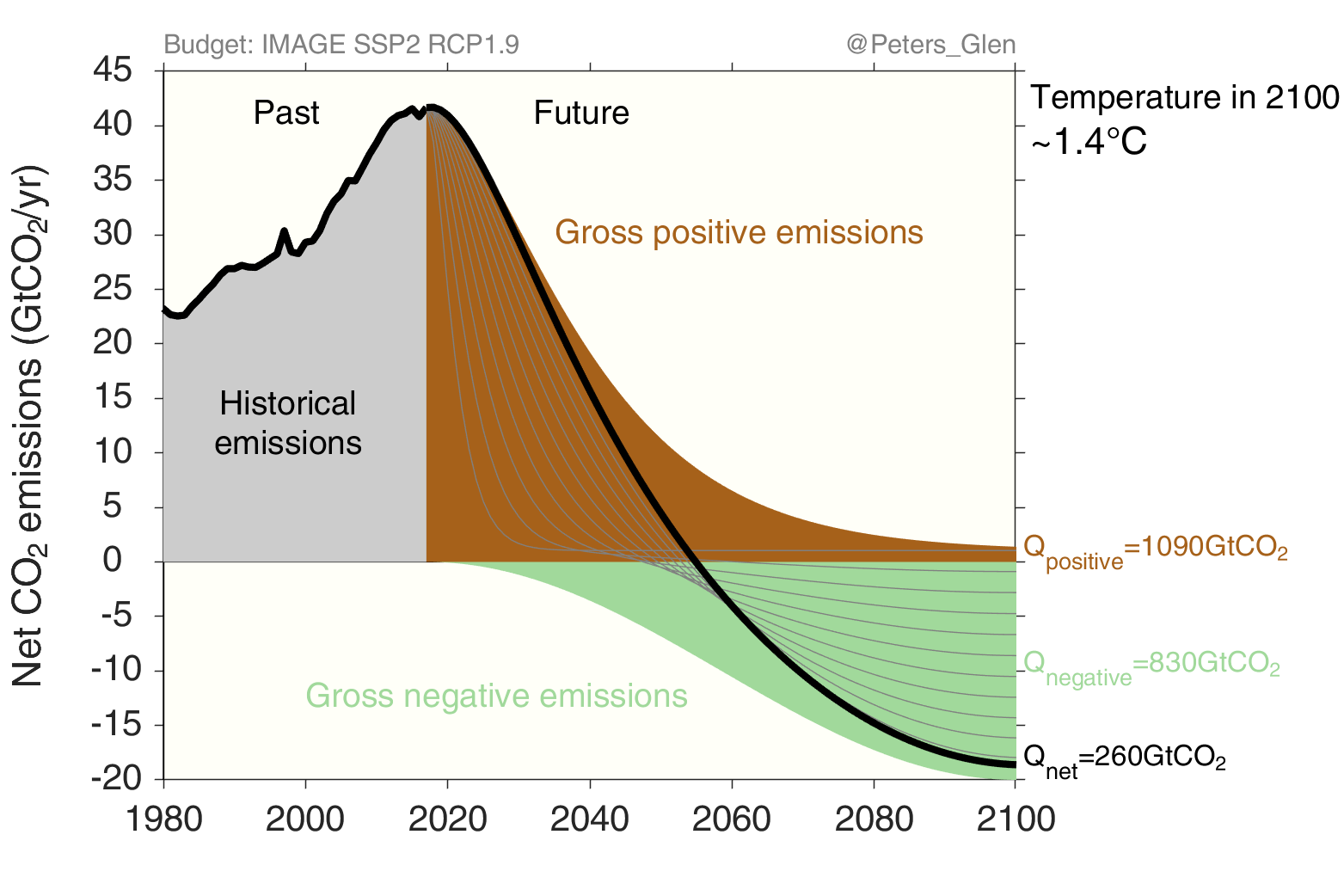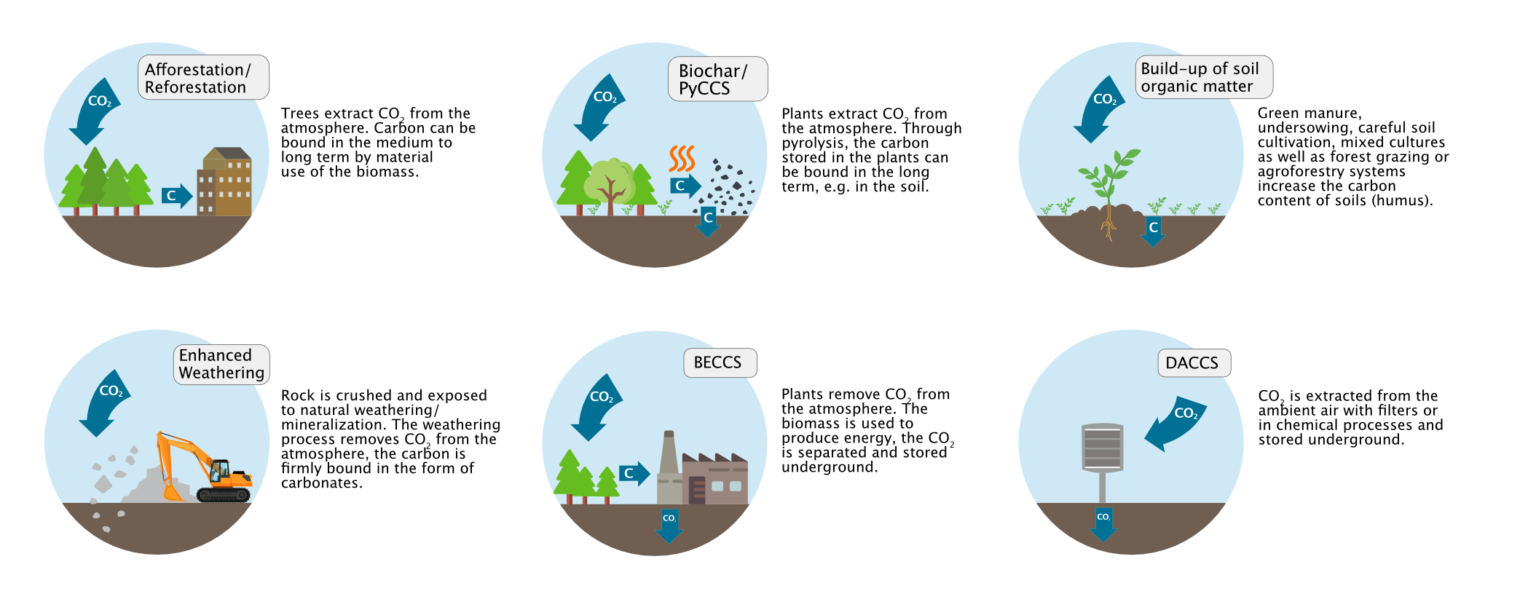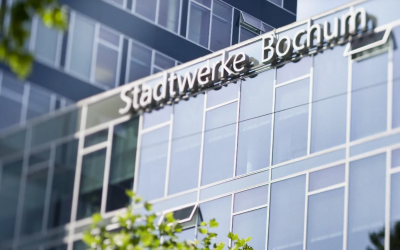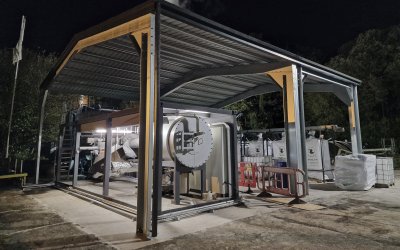The strict requirements of the EBC
In order to achieve climate neutrality by 2050, as called for by the EU, two fundamentally different strands of action are required: on the one hand, the reduction of carbon emissions, and on the other, the creation of carbon sinks.

(source: Glen peters @ https://www.cicero.oslo.no/en/posts/climate-news/stylised-pathways-to-well-below-2c)
In the EU, this would require sequestering a carbon quantity on the order of 15% of 1990 emissions, or about 850 million metric tons of CO2 equivalent. Without carbon sinks, also known as negative emissions, climate neutrality and thus the Paris climate goals cannot be achieved.
There are a number of viable methods for creating carbon sinks, also known as Negative Emission Technologies (NET), that actively remove CO2 from the atmosphere. The key to carbon efficiency is sequestration (i.e., storage) over as long a period of time as possible.

(source: EBI White Paper adjusted from MCC)
The European Biochar Certificate (EBC) for quality control was supplemented in June 2020 with a new standard for carbon sink certification (EBC, 2020). This provided a scientifically sound basis for quantifying the overall carbon sink performance of biochar applications. Key elements include:
- Biomass production must be carbon neutral, i.e., it must not impact existing carbon sinks.
- Emissions from the entire charring process (pyrolysis) must be subtracted. In particular, this includes emissions associated with the transport and processing of the biomass, any post-treatment, and the energy required to start the pyrolysis process.
- Emissions from transporting the biochar to the point of use and, if applicable, emissions from further processing of the biochar must also be subtracted.
- The final use of the biochar determines the durability of the carbon sink. For example, for soil applications, a scientifically based annual decay must be assumed. However, if the biochar is used as a sand replacement in concrete, for example, this is not necessary because the biochar cannot oxidize in the absence of air.






0 Comments